Aotearoa New Zealand might be known as a ‘land of birds’ but we’ve teamed up with local illustrator Erin Forsyth to highlight native lizards in a beautiful new poster He mokomoko nō Aotearoa.
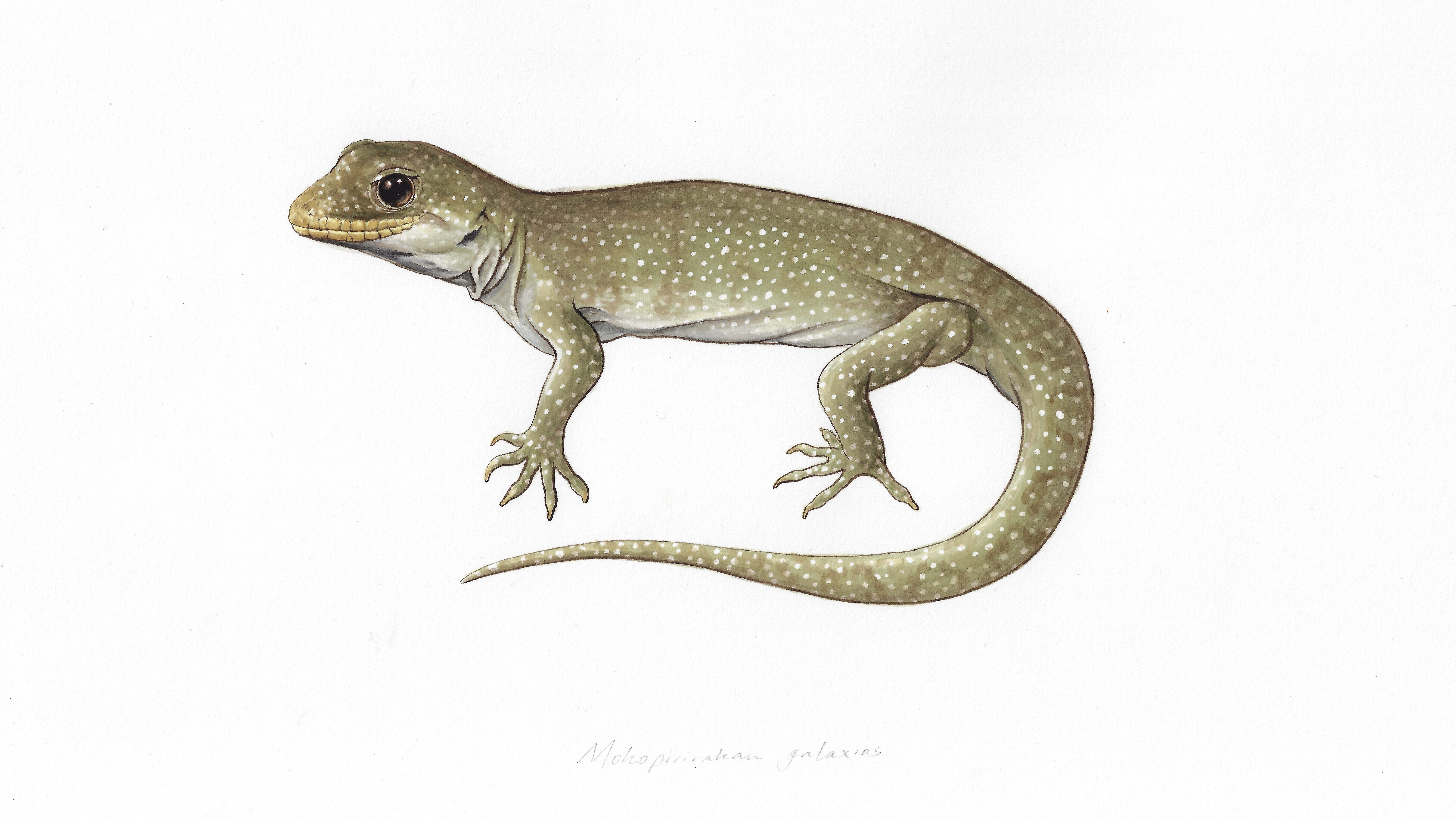
Predator Free NZ Trust and Erin aim to raise awareness of Aotearoa’s lizard species, from the little-known Sinbad skink to the raukawa gecko that is sometimes found in our backyards.
Did you know that Aotearoa New Zealand has more than 110 lizard species? All of them are endemic — meaning they are found nowhere else in the world. Nearly half of them are either endangered or threatened.
We chatted with Erin to discuss the new lizard poster. Thanks for speaking with us today, Erin.
What inspired you to be involved in a poster dedicated to our native lizards?
They just need to be seen! I want this poster to show that New Zealand’s biodiversity goes beyond our birds. We have an incredible variety of lizards and the vast majority of them are in a great deal of trouble.
I hope this poster will start conversations about protecting our native lizards. As a country we are very proud of our native birds, so I’m keen for more people to get to know our lizards too. We can’t protect our native lizards if we don’t know about them and aren’t aware of their plight.
Did you know you can help to protect our lizards too? Here are some easy things you can do:
- Trap rats, mice and hedgehogs in your backyard — buy a trap from the Predator Free NZ Trust online shop
- Keep your garden messy with lots of nooks and crannies for them to hide
- Plant small shrubs, grasses and ground cover with twisting branches
- Keep your cat indoors as much as you can or at least for one hour before dusk and an hour after dawn – this is when our lizards are at their slowest and are easy prey for cats
Make a lizard garden with the kids. Predator Free NZ Trust have created a guide on how you can easily do this.
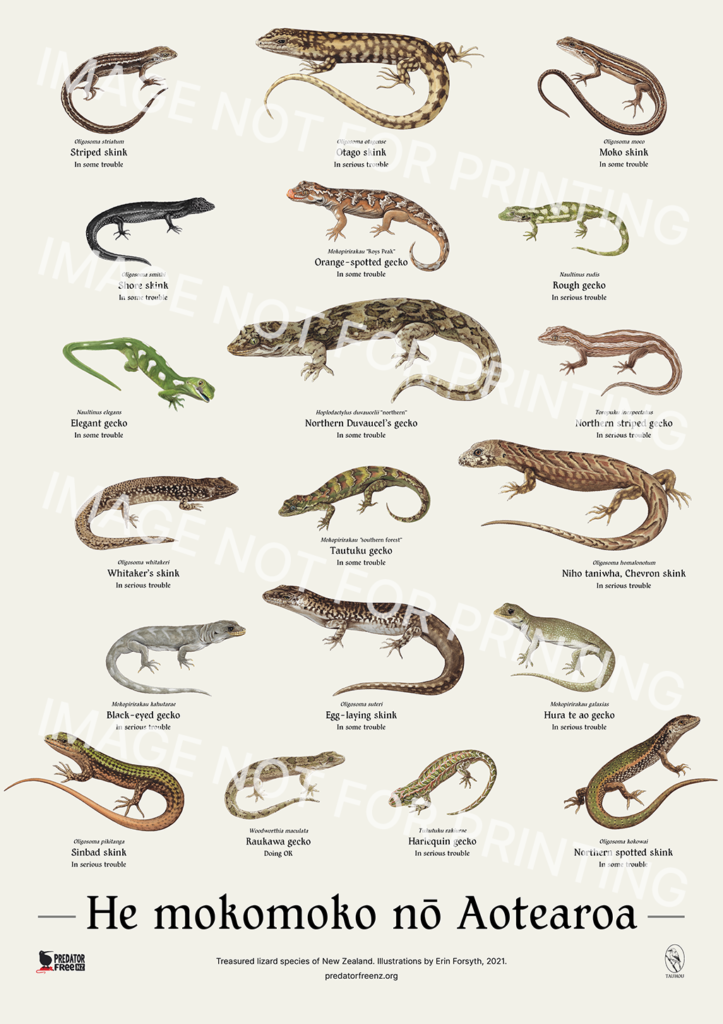
What have you learnt about our lizards through this project?
Before doing this project, I always pictured a gecko being larger and longer than a skink. Now I’ve learnt that our skinks and geckos can be quite similarly sized in terms of their length. Did you know our longest lizard is the chevron skink? They can reach 35cm in total length — mainly by virtue of their particularly long tail.
I was also amazed by the variety of habitats that our lizards call home. The hura te ao gecko is found high up in a North Otago mountain range. The aptly named shore skink is found only along our coastlines. The raukawa gecko can be found amongst the leaf litter in a messy backyard. All of these species are featured in the poster to show just how diverse our native lizards are.
Do you have a favourite lizard?
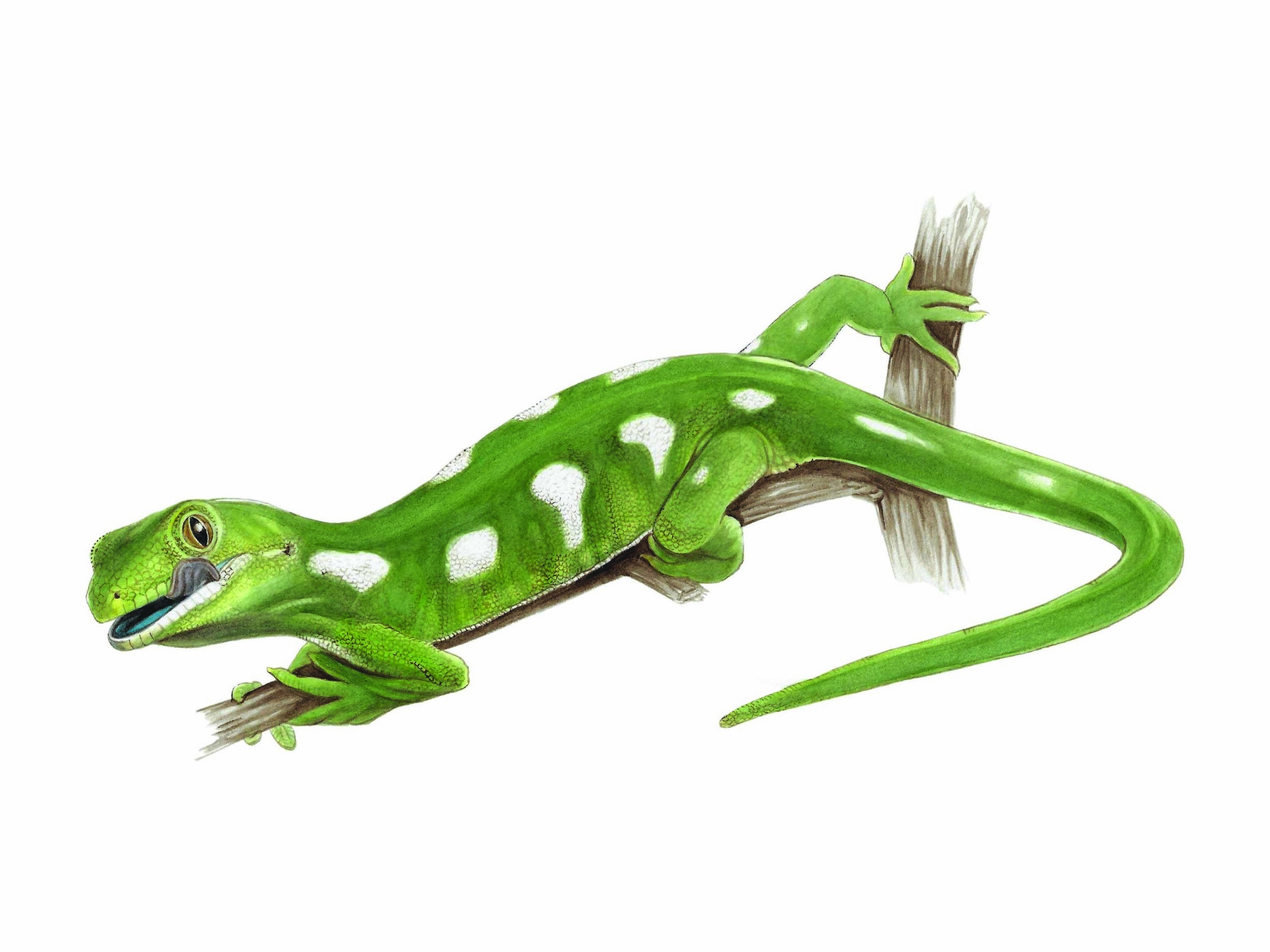
Weirdly, yes! When I was a child our house backed onto a small section of native bush and I found an elegant gecko (formerly known as the Auckland green gecko) after school one day. Not knowing any better, I took it into class for show and tell. My teacher told me to return it to the bush. Never take a lizard out of its home! I learnt a lot from that and loved the interaction with that lizard from the small time we spent together.
The elegant gecko is one of our green geckos (moko kākāriki) and is found from southern Northland to the central North Island. The elegant gecko is one of the ten geckos featured in this poster.
Why is it important to profile lesser-known native lizards?
Building awareness of lesser-known species can help with their protection. All of our lizards are special and they can’t be replaced. This is the only place on earth where they are found so we must protect them.
I think a lot of New Zealanders love our unique fauna but aren’t aware of just how many native lizards we have. I hope this poster sparks curiosity in people so they are keen to learn more about our native lizards. A great resource I’ve used is the New Zealand Herpetological Society website.
What are you hoping people learn from He mokomoko nō Aotearoa?
The illustrations included in this poster only represent a fraction of the number of endemic mokomoko (lizards) of Aotearoa New Zealand. There are thought to be over 110 species total and new species are still being identified.
The species selected for inclusion in the poster have been chosen to demonstrate the diversity of lizard fauna with an aim toward their conservation. Most, if not all, of these species are at risk of predation by introduced predators and this may lead to their declining population or even their extinction.
The lizards highlighted in the poster were selected for their distinct appearances and to draw attention to their plight. We chose the harlequin gecko because it embodies how striking and unusual our geckos can look while still camouflaging seamlessly with their usual habitat. We chose Whitaker’s skink because, like a lot of our native lizards, their distribution has shrunk noticeably with the arrival of humans and the predators they introduced.
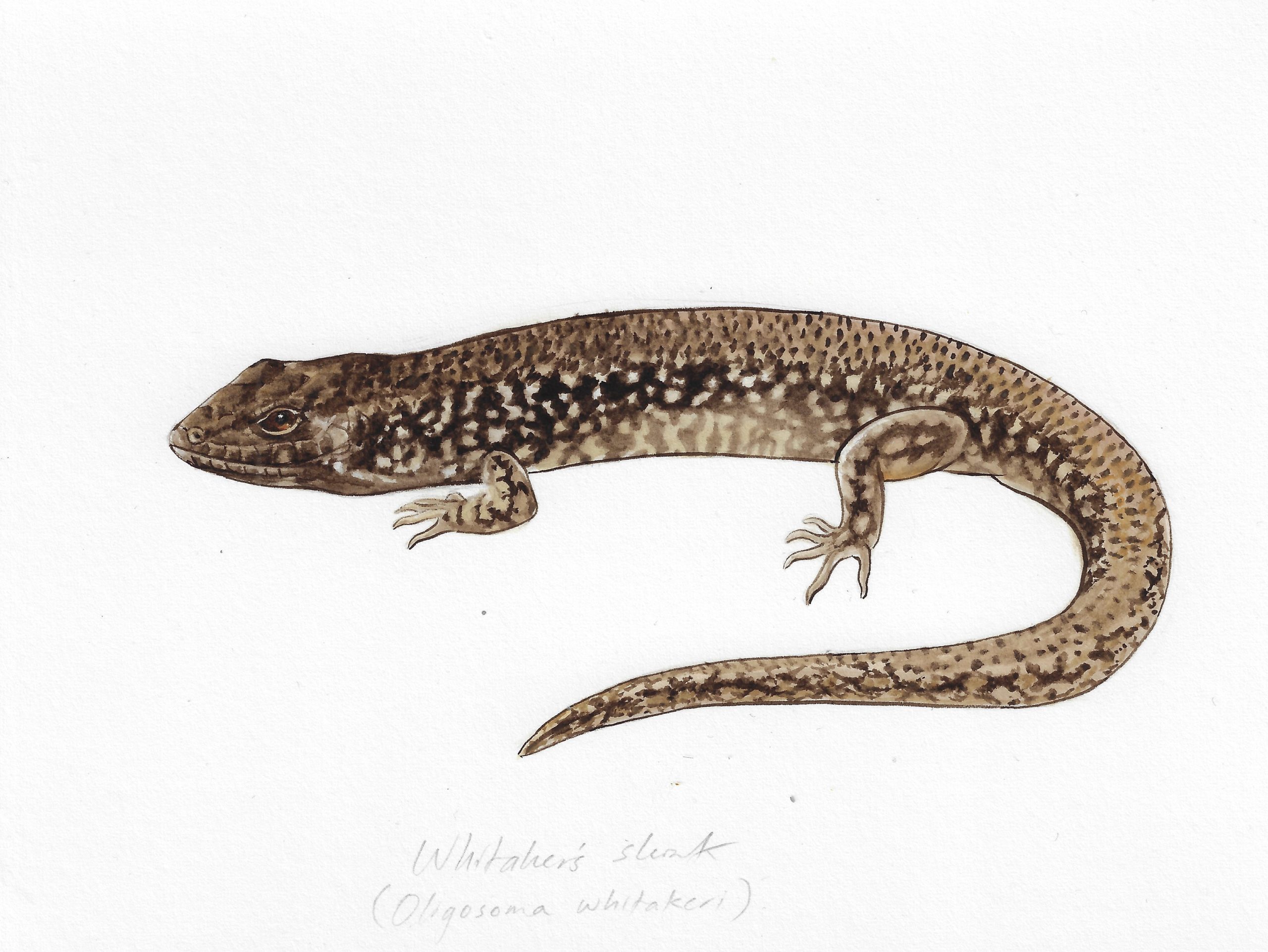
What does it cost and where can you buy one?
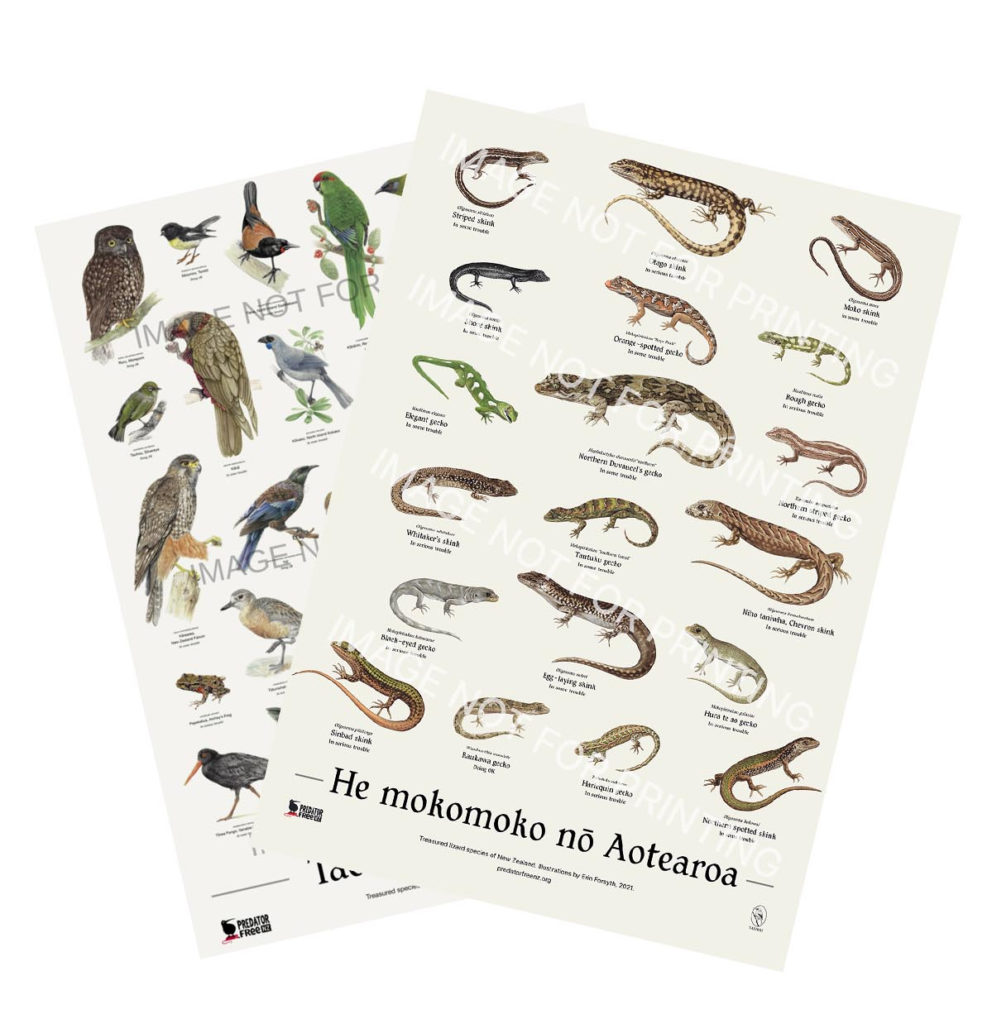
The He mokomoko nō Aotearoa poster is available from the Predator Free NZ Trust online store for a Christmas special of $25 (shipping included), normally $30.
You can also buy the two posters I’ve illustrated for the Predator Free NZ Trust — Taonga o Aotearoa (Treasures of New Zealand) and He mokomoko nō Aotearoa (Lizards of New Zealand) – together for $50.
If you’re based in Auckland and you want to see more of my artwork, visit my open studio at 16 Linden Street in Mount Roskill from Wednesday to Saturday 1 – 6 pm or by appointment.
It’s hoped that the poster will also be available in some sanctuaries and retailers throughout New Zealand, so watch this space.
Where can people see more of your work?
I’m fortunate to have worked in the Auckland War Memorial Museum (Tāmaki Paenga Hira), the NZ Parliamentary Service Collection (Beehive, te Whanganui-a-Tara, Wellington) and Puke Ariki Museum (Ngāmotu, New Plymouth). You can find some of my mural work dotted around the country.
But given the current situation, the simplest place to view my work is on my website erinforsyth.com or @erin_forsyth on Instagram.

